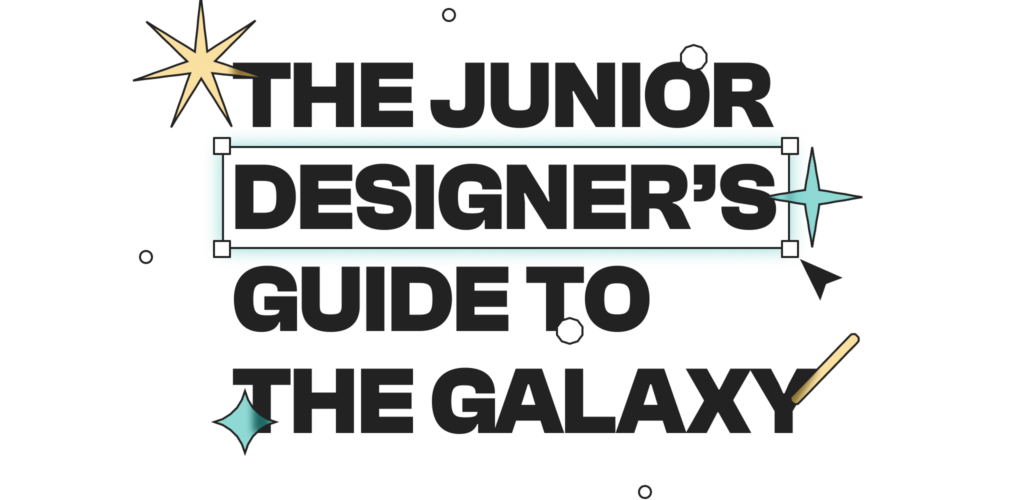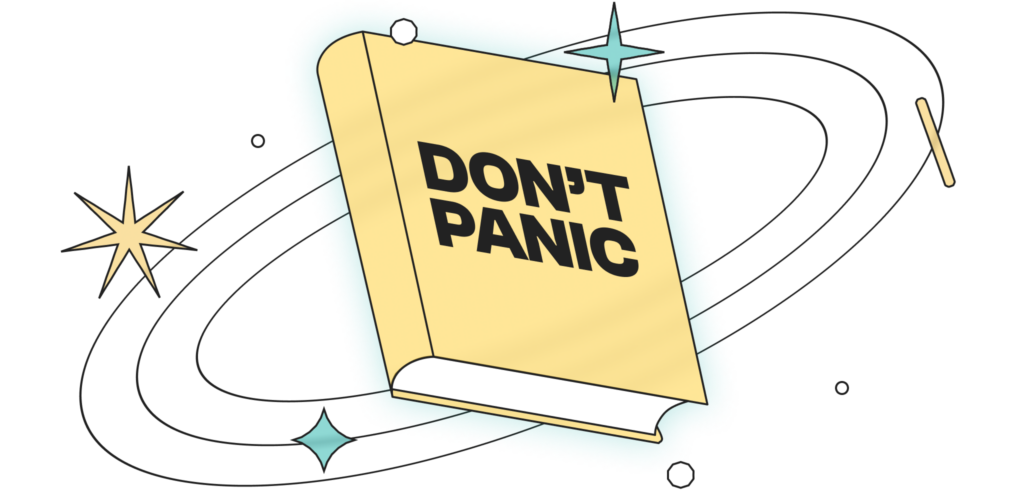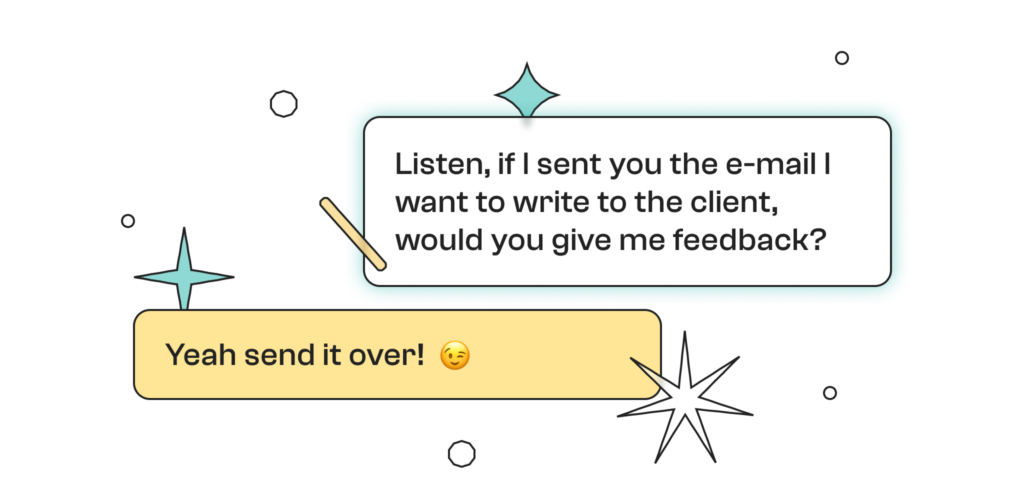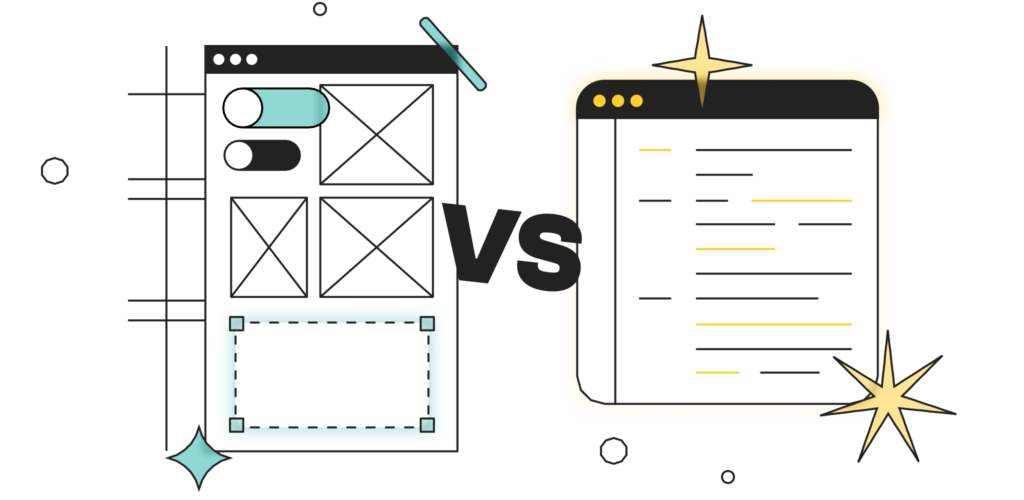The Junior Designer’s guide to the galaxy
After a year's work at Moze, a young designer writes a guide for her peers to help them make the best of their first steps into the working world.

I’m Emily, a Designer at Moze for almost a year. I have a Master’s degree in Communication Design from Politecnico di Milano and before I worked here I had some other experiences as a designer, both in studios and agencies, and as a freelancer; in Moze I work on user experience and user interface design for different entities. If, like me, you come from a specific educational background, perhaps from a university faculty or a post-graduate course in communication or design, you might feel a sense of alienation mixed with a strong optimism and a desire to do, to learn, and to know. You will probably feel a bit lost, at times doubting your skills and competences, while on other days even a simple ‘good job!’ will seem like a huge personal victory.
Many things change when you move from the world of education to the world of work: it is just like jumping from one planet to another. Perhaps, like me, you were lucky enough to embark on a few interstellar journeys during your university years, and so you will already be aware of the differences between one planet and another. You will agree with me, or discover, that the changes are not few and can bring with them not only uncertainties, but also new resources and opportunities to grow.
That is why I thought it might be useful to put down a list of tips for my peers (and not so peers) who are entering this profession for the first time. I don’t claim to have the answers to all questions (except for the fundamental question, and the answer, you know it, is: 42!), but indulge me while I try to outline this little Hitchhiker’s Guide to the Galaxy.

Here, then, is my ‘trilogy’ in five tips:
- Don’t get overwhelmed by the speed at which you will learn (or unlearn) many things.
When you land on planet work, you will most likely find yourself absorbing new skills at great speed, and at the same time realising that many of the notions you learnt during your studies are either outdated, detached from work reality, or partial and can be integrated with new understandings. Not everything you studied was necessarily useful, or fundamental, and there are things you still have to learn that will make you a better designer.
Prepare yourself for changes in perspectives and new points of view, also because every experience, whether educational or work-related, is different: for example, while at university I was used to team projects and evaluations, while now I am responsible for my own work and projects in total autonomy and independence, and this change has carried with it some fear but also great personal satisfaction.
Moreover, whereas previously each project was reviewed with a precise cadence, maybe once a week, now the workflow is a constant compromise between feedback and fixes, between a “what do you think?” and a “maybe you should work on this a little more…”. There is no longer a final exam, an evaluation of your skills or the quality of your presentations (and thank goodness for that, I would say!), but perhaps there is something even more frightening: a project deadline, a hand-off to developers or a delivery of the assets to the client. So there are a lot of things you will have to adapt to: don’t be frightened, but rather welcome change as part of your growth path.
- Ask, ask, ask. Stupid questions exist, but you are allowed to ask them (at least for a while).
When you land on a new planet you become the alien: it’s normal that something eludes you, that you don’t have total mastery of the terrain you walk on. Perhaps the best thing about being a junior figure is the fact that no one expects you to have it all figured out, to be the best designer or to have all the skills that your boss or your design director has.
I for one always develop a kind of performance anxiety: ‘am I really able to do this job?’ or ‘I have never done this, everyone will realise I am not capable’. My advice, if you ever run into these bad thoughts, is to turn them around as much as possible so that they become a motivational drive: ‘I have so much to learn, who knows how much I will improve in a year’ or ‘I have the opportunity to prove that I am not afraid to grow and improve’.
Nobody, in a healthy work environment, expects you to already know everything, and as long as you show commitment and willingness to learn, everything you still don’t know will not be a problem, but an opportunity. That’s why I say ‘ask, ask, ask’: answering you will hardly be a hassle, because for your bosses it will be an opportunity to train you and direct you towards the right way of working (and this also benefits them), while for your colleagues it will be an opportunity for exchange and growth. In short, enjoy this period as a junior designer, while slips are still forgiven.

- Your opinion is worth more than you think (but don’t love it too much).
We may believe that as junior members of the team we do not have the right to bring our ideas to a project or our personal contribution to the company, but there is nothing more counterproductive than keeping silent for fear of being wrong.
If, for example, you work with senior co-workers and figures, do not be afraid to assert your ideas (if they are supported by sufficient logic): it is not so much a matter of ‘winning’ an argument, but of stimulating it with new points of view. The important thing is not to get attached to your own ideas, but having the desire to find the right solution. Often seniors will end up being right, but you will have understood why your idea was not optimal or feasible, and they will have seen that you have the ability to think outside the box and make your point.
This applies to proposals of all kinds: share that UX Research intensive course you would like to attend, or recommend reading a book you find interesting or attending an event you saw on social media. Often the ‘newcomers’ have different perspectives and can bring new life into an environment.
- Talk to developers: they don’t bite.
During university, I had few opportunities to see a hypothetical project become reality. I learned how to design slides worthy of an Apple launch to show the professor my work, but I never had to develop, or hand over to a developer, my project for it to become reality. It is from my early experiences as a freelance digital designer, and now at Moze, that I really realised how essential it is to engage with fellow developers when designing digital products, and not just when it’s time to hand-off the project, but right from the beginning and throughout the design process.
I am lucky enough to work in a team where a lot of importance is attached to the collaboration between designer and developer. The developer, in case you still don’t know, is that mythological figure who sits in front of you or in the office next door, and they’re a real person, with their fears and anxieties (90% of which have to do with the Figma file you’re going to deliver to them): offer them a coffee and disturb them, tactfully and politely, to ask them if that gradient that moves when you hover is hard to develop, or if the way you’ve designed the interface components makes sense to them.
I believe it is crucial for us designers to also learn to think like developers: knowing and mastering the logic behind digital product development, especially the front-end part, is in my opinion as important a skill as having a user-centred approach or being able to present a project. Knowing how to think like a developer will make you a more aware designer, and maybe one day we will all be able to put an end to the imaginary feud between designers and front-end developers.
Please note: back-end developers, on the other hand, truly are legendary creatures and if you spot one, stay still and don’t provoke them. They may be harmless.

- Have fun and be yourself.
The last piece of advice is a bit obvious, but it is no less useful. On the contrary, perhaps it is the one most worth remembering, because we often forget this when we land in an ecosystem and are ‘the newcomers’, and, caught up in the anxiety of proving our worth, we let the most fun and stimulating part of the job slip away. Make friends, engage with co-workers and superiors, be curious and don’t be afraid to be who you are (while maintaining your professionalism, of course).
You were chosen for this job because of who you are. Unless you have written in your CV that you can read Sanskrit or that you are able to do a triple somersault and these things end up not being true, don’t worry: what you are and what you know will be fine and will be enough. The important thing is that you are able to keep alive within you the ‘hunger’ to grow and master new skills that you had during your studies. Because the truth is, even though you are now a full-fledged designer, you will never stop learning new things.